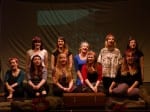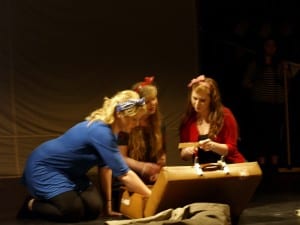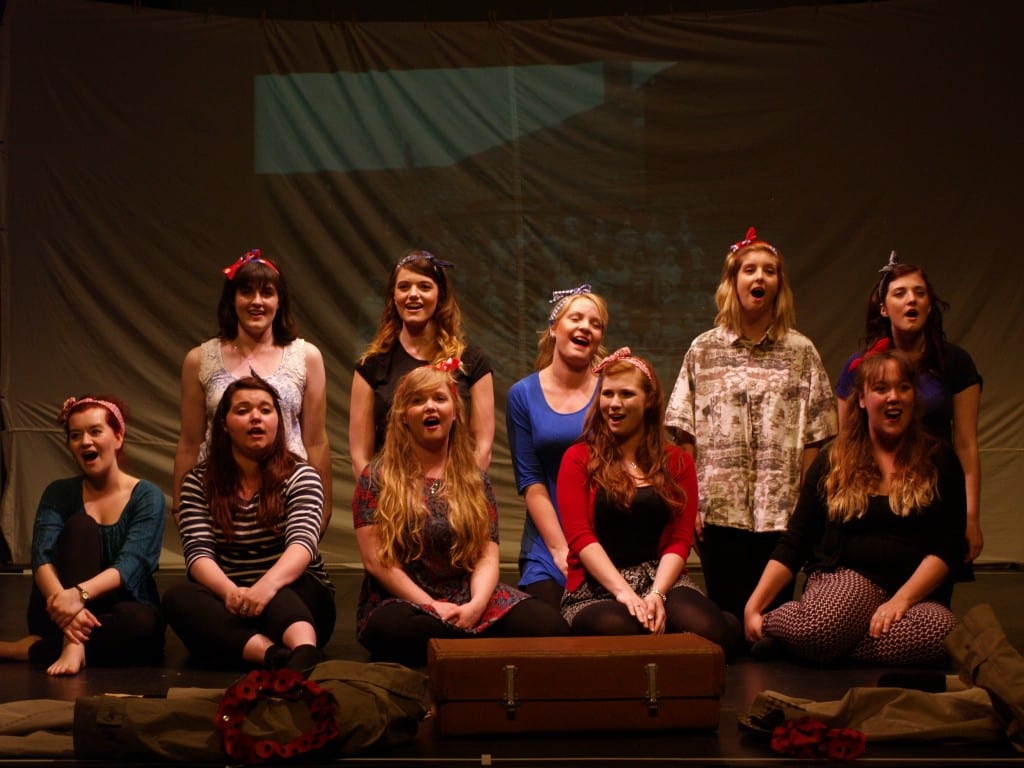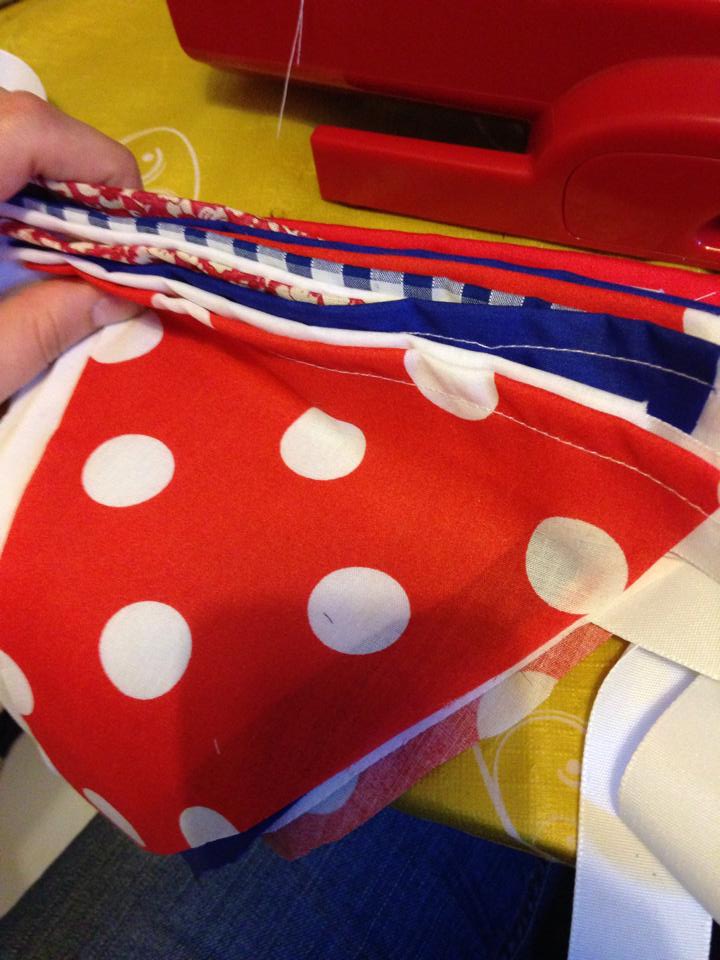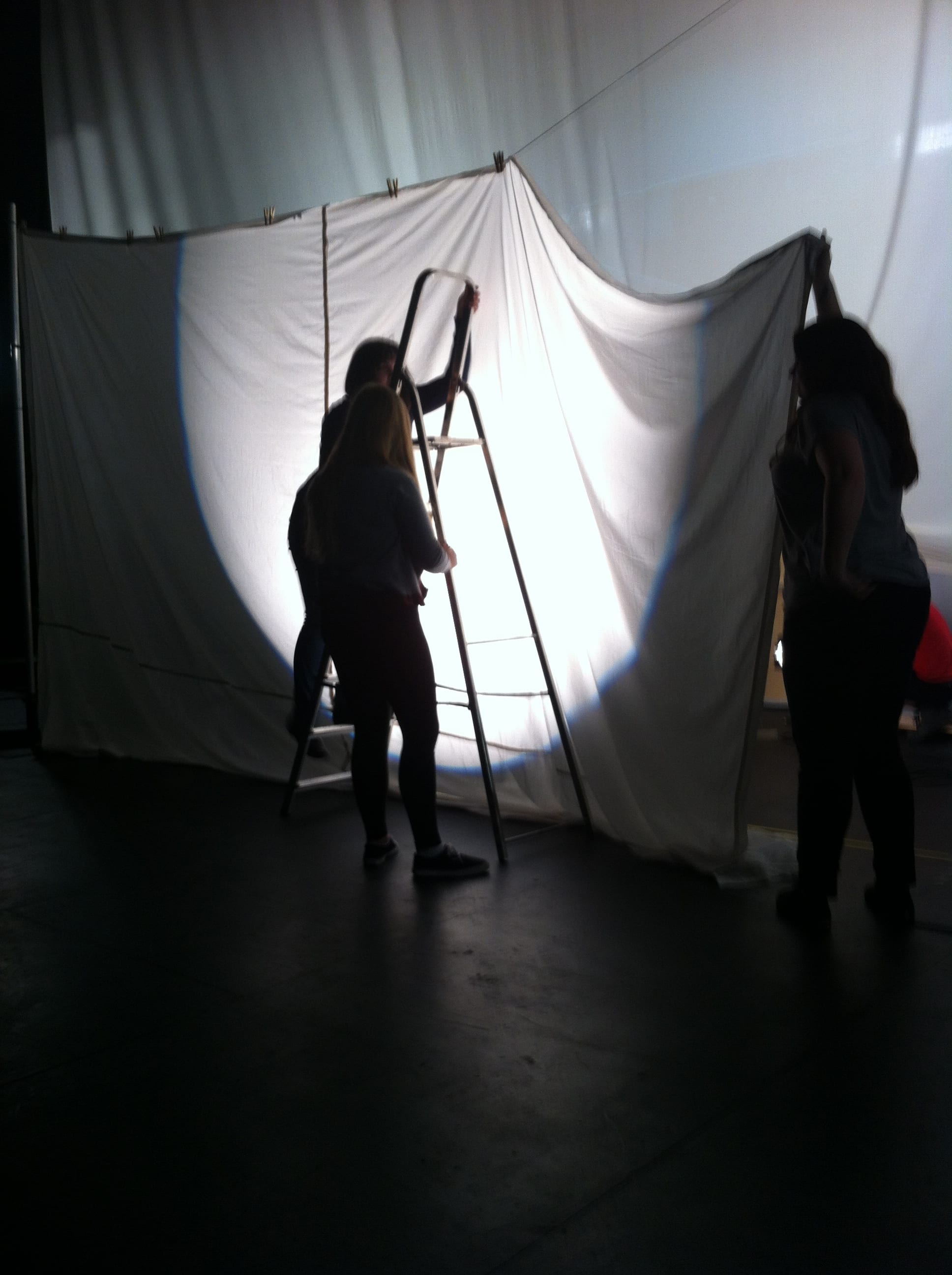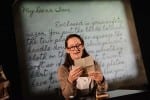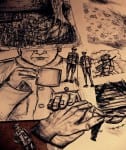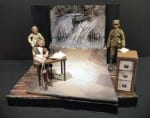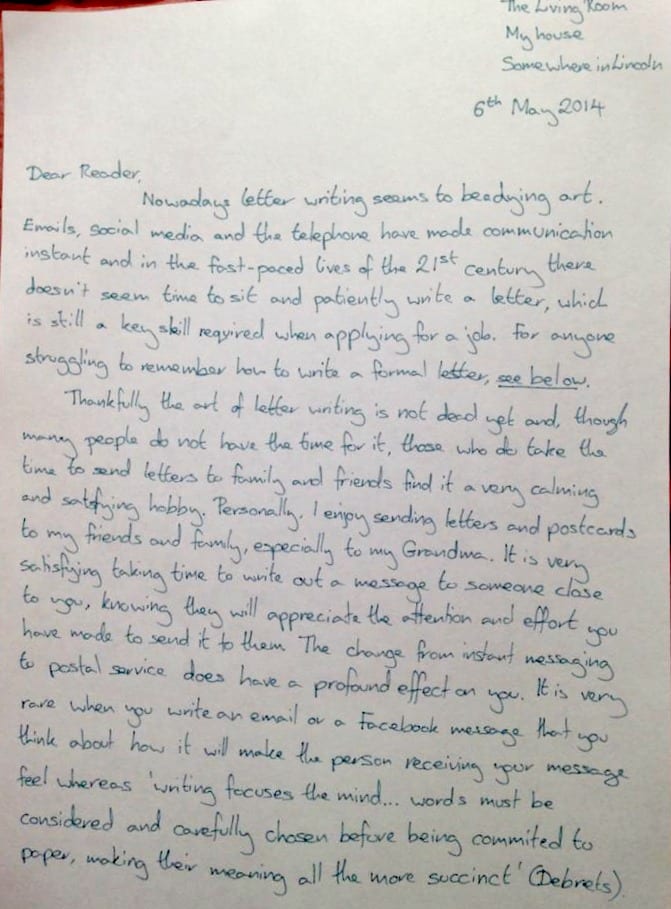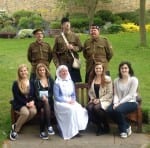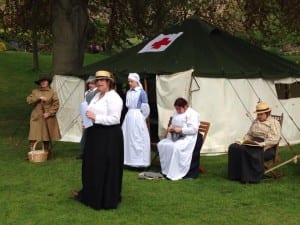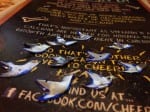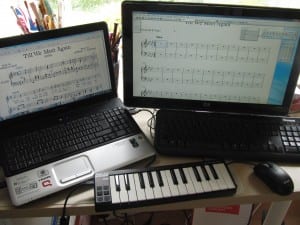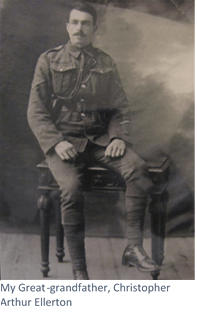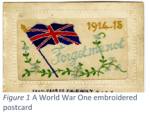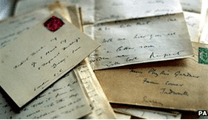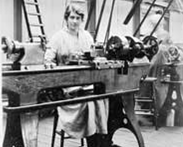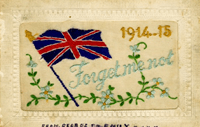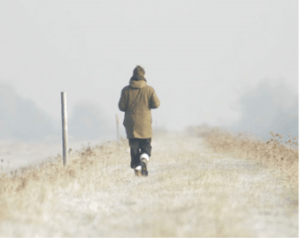So Sincerely Yours has finished, hopefully just for now. With another four years of remembrance of the First World War you never know what might happen.
The performance day ran more smoothly than anticipated. As a tech team we faced complications with two of the projections, the poppy I had made could not be seen when projected onto the black floor, as opposed to the white cyclorama where projections were a lot clearer. The other projection was supposed to be on an armchair covered in a white sheet, reflective of the ‘attic stories’ we originally wanted the verbatim pieces to resemble, which got a different physical representation in the trunk in the Somewhere in France scene. The projection was an incremental progression of numbers to convey the many soldiers who would have died on the first day of the Battle of the Somme in the duration of our performance. Unfortunately the video could not be manipulated to be seen clearly on the sheet without some of the projection ‘bleeding’ onto the wall behind, which would have been seen in the dimmer sections of the performance. Both of these had to be cut unfortunately, but as they did not impact on the performance itself it was just the time making and rehearsing which had been lost. However, despite these minor setbacks we managed to do almost a full run as a cue-to-cue, as there were so many cues in each section of the show for which each person needed to practise. We also managed to finish early after a successful dress rehearsal so we had more time to prepare for the show in the evening.
The show itself went by rapidly, and we all seemed to relax into it. As people say, time really flies when you’re having fun, which I think we all were. By the last song we were incredibly proud of what we had achieved, and I think the show really reflected how much we all enjoyed working together and how much confidence we had in each other. I found myself getting emotional during the Hand on Shoulder verbatim of my Grandma’s words, as if I was finally beginning to understand the significance of why two men wouldn’t say anything, and just put a hand on the other’s shoulder. The message of the show seemed to ring true with the audience, who gave us many lovely comments afterwards, including that the show was us playing ourselves, letting the stories speak for themselves and not trying to play the people in them. One comment that stuck with me was that it wasn’t strictly a ‘feminist’ drama, it was a show about equality, paying respects to and celebrating the lives both of the soldiers and the women who took up their jobs whilst they were at war.
So after the show has been and gone, what can I say an Assistant Stage Manager does?
In truth, a bit of everything. I don’t think I’ve ever been so busy on such a diverse number of tasks. I have assisted the Stage Manager and Production Manager with the technical elements of the show, helping to compile the lighting, sound and projection cue sheets, as well as setting up the stage with props and especially the cyc’. I have embroidered a postcard for the marketing team, created backing tracks for all the songs, to rehearse and perform with, and have sewn bunting and headbands for props and costume. I have made a bird gobo for the verbatim sections and a poppy projection for the finale song. I went to the archives as part of a team and we copied original letters to use in rehearsals as part of our research and I have helped Ellie to teach Ballroom dancing. I have tried to contribute in any way I can, using what skills I have and have eventually found my place within the company. I have loved every minute of it, in rehearsals taking direction, in production meetings assisting with the process and at home creating things for the performance, and I am humbled to have been a part of such an amazing group of women.
Works Cited
Kirby, L. (2014) Devising ‘Somewhere in France’. [blog entry] Available from https://birdseyeviewtheatre.blogs.lincoln.ac.uk/2014/05/26/devising-somewhere-in-france/ [Accessed 27 May 2014].
Pearson, F. (2014) Send Me Away With A Smile.
Pearson, F. (2014) Somewhere in France trunk.
Pearson, L. (2014) Birds Eye View embroidered postcard progress. [blog entry] Available from https://birdseyeviewtheatre.blogs.lincoln.ac.uk/2014/04/07/birds-eye-view-embroidered-postcard-progress/ [Accessed 27 May 2014].
Pearson, L. (2014) Creating a backing track. [blog entry] Available from https://birdseyeviewtheatre.blogs.lincoln.ac.uk/2014/04/20/creating-a-backing-track/ [Accessed 27 May 2014].
Pearson, L. (2014) Get busy making a gobo. [blog entry] Available from https://birdseyeviewtheatre.blogs.lincoln.ac.uk/2014/05/02/get-busy-making-a-gobo/ [Accessed 27 May 2014].
Pearson, L. (2014) How to make bunting. [blog entry] Available from https://birdseyeviewtheatre.blogs.lincoln.ac.uk/2014/05/26/how-to-make-bunting/ [Accessed 27 May 2014].
Pearson, L. (2014) Poppy Projection.
Pearson, L. (2014) The Archives. [blog entry] Available from https://birdseyeviewtheatre.blogs.lincoln.ac.uk/2014/02/22/the-archives/ [Accessed 27 May 2014].
